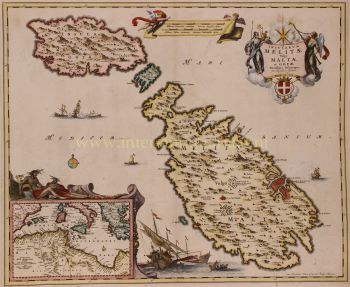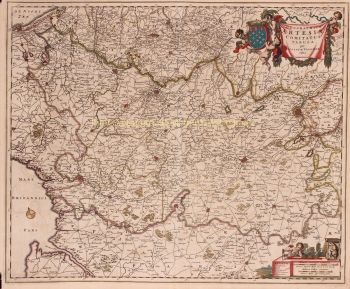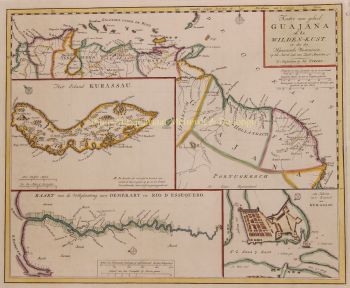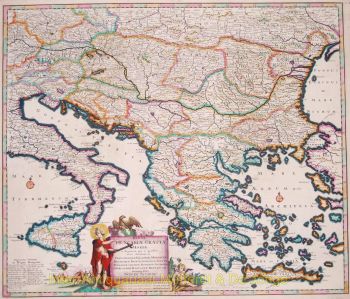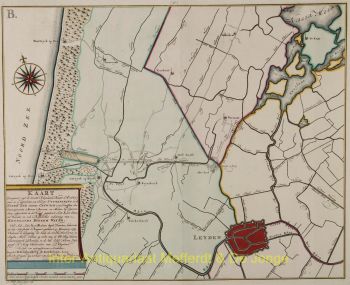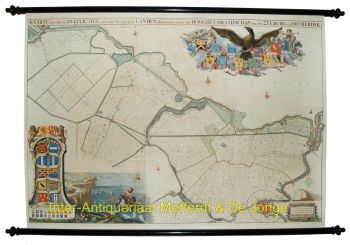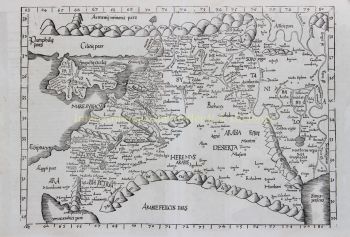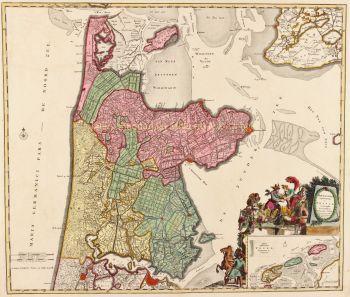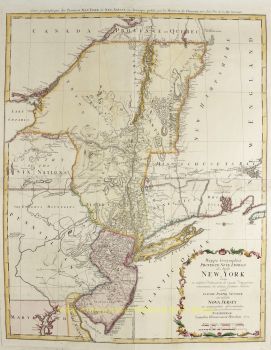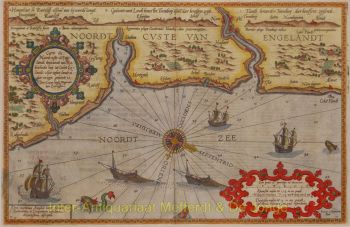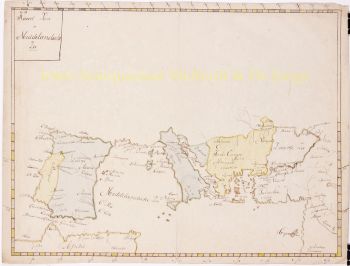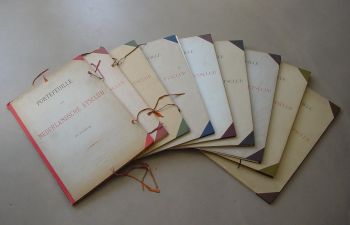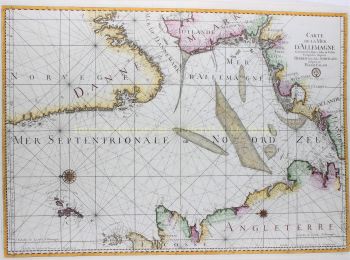Groningen 1684
Nicolaes Visscher
Attualmente non disponibile tramite Gallerease
- A proposito di opere d'arte
THE CITY AND LANE OF GRONINGEN "Groningae et Omlandiae Dominium vulgo de Provincie van Stadt en Lande", copper engraving made by A. Hogeboom, published by Nicolaes Visscher as part of his "Germania Inferior...". in 1684. Coloured by hand in time. Dim. 46 x 56 cm. Nicolaes Visscher II produced this map of the City and Country of Groningen together with the Wehe-born nobleman Ludolf Tjarda van Starkenborgh. Compared to earlier maps of the area, here and there small changes have been made. For instance, the settlements around Sappemeer have been depicted in more detail and the city of Groningen, surrounded by its seventeen dwellings, has been depicted more beautifully and topographically precise than before. The zijlen in the Old Provincial Dike have not been forgotten either, and furthermore, the map contains several abandoned houses and tollbooths. A number of lakes depicted by earlier mapmakers are named here, such as the Lijskemeer north of Bourtange and the lakes near Opwierde and Meedhuizen. Lakes have also been added and this is undoubtedly due to the progress of the peat extraction. In the south of Vredewold, Van Starkenborgh gives three moorings which in reality were much smaller and lay on a west-east, instead of a south-west-north-east line. They would disappear by draining, just like the Hoetmansmeer indicated near Wildervank. The nearby dykes point to systematic peat extraction along the Leekster Hoofddiep. The lake near De Punt mentioned here for the first time is not the Paterswoldse Meer or the Freische Veen. These would only come into being later in the Onland area north of Paterswolde. South of Woltersum two circles mark Wester- and Oostermeer. The Olderkerkerk Lake, now long gone and forgotten, is still marked. Like many other lakes it would disappear completely from the map in the 19th century due to drainage. Price: Euro 650,-
- A proposito di opere artista
Nicolaes era l'unico figlio di Claes Jansz. Pescatore. È anche conosciuto con i nomi: Nicolaas o Claes Claesz. Dopo anni di lavoro per il padre nell'azienda, gli succedette dopo la sua morte nel 1652. Nel 1662 fu ammesso alla corporazione dei librai di Amsterdam e nel 1677 Nicolaes, ormai rispettato editore, ricevette un brevetto di 15 anni dagli stati dell'Olanda e della Frisia occidentale per la stampa e la pubblicazione di mappe. Morì due anni dopo e fu sepolto nella stessa cappella del padre.
Le edizioni Atlas di Nicolaes I includevano:
"Atlas Contractus Orbis Terrarum" del 1657.
“Germania Inferiore” del 1663.
"Atlante Minore" del 1675.
Gli atlanti di Visscher venivano spesso compilati secondo i desideri degli acquirenti (il cosiddetto Atlas Contractus). Generalmente non contengono testo, solo a volte un indice stampato. Sono state utilizzate carte di altri produttori, lastre di rame autoincise e lavorate da suo padre.Uno dei punti salienti della cartografia seicentesca è la mappa murale a più pagine. Ne è un esempio - del 1656 - la carta della Zelanda: “Zelandiae Comitatus novissima Tabula”. Questo consisteva in nove fogli che insieme avevano una dimensione di 140 x 160 cm. Aggiungendo paesaggi urbani, la mappa potrebbe essere ulteriormente ingrandita. Questi paesaggi urbani furono a loro volta pubblicati intorno al 1668 con il nome: “Speculum Zelandiae”.
Artwork details
Related artworks
- 1 - 4 / 5
- 1 - 4 / 24



